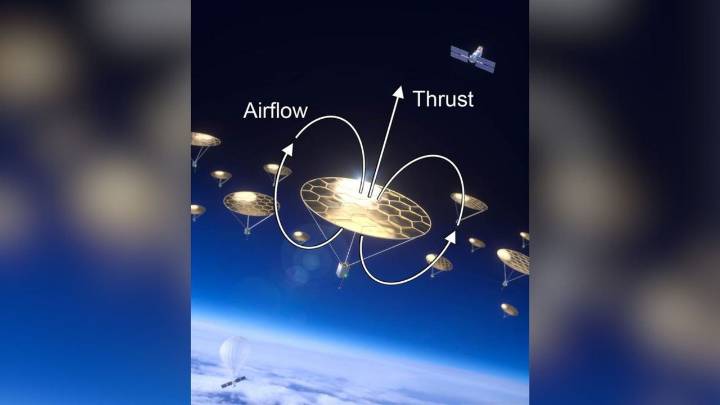Self-lofting devices propelled by sunlight have been tested for the first time in near-vacuum conditions akin to those in Earth's upper atmosphere, paving the way for a revolution in atmospheric science.
The tiny, lightweight membranes — which are made of aluminum oxide and a layer of chromium — take advantage of a phenomenon known as photophoresis, which occurs when one side of a slice of thin material gets warmer than the other. As gas molecules bounce off the warmer side, they push the membrane upward. However, the effect is very weak and thus can be observed only in very low-pressure environments, such as those near the edge of space.
In the recent experiment, described in a paper published Aug. 13 in the journal Nature, the researchers made 0.4-inch-wide (1 centimeter) specks float

 Space.com
Space.com

 Butler Eagle
Butler Eagle KTNV Channel 13 Las Vegas
KTNV Channel 13 Las Vegas Detroit News
Detroit News Press of Alantic City Business
Press of Alantic City Business America News
America News The Daily Bonnet
The Daily Bonnet Atlanta Black Star Entertainment
Atlanta Black Star Entertainment